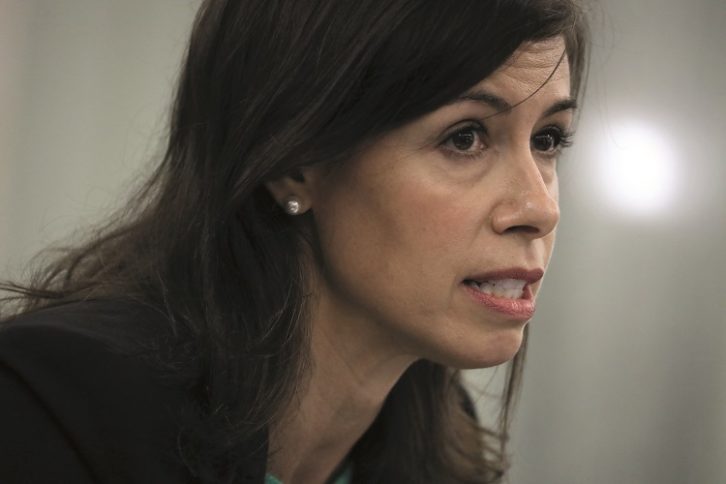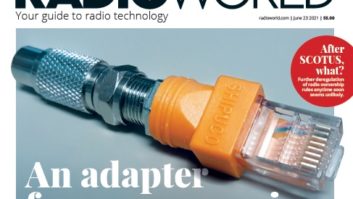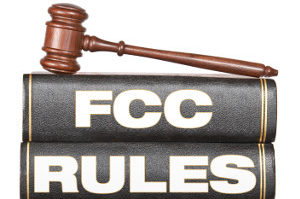
The FCC’s ongoing local media ownership review is in a state of flux without a confirmed chairperson leading it.
Since late January the Federal Communications Commission has been led by Acting Chairwoman Jessica Rosenworcel, and FCC watchers consider it unlikely that she would proceed with the 2018 Quadrennial Review of Media Ownership Rules until a chair is named by President Biden and approved by the Senate. As of mid-June the FCC remained split 2–2 along party lines.
But even when a chair is named — Rosenworcel or anyone else — we probably shouldn’t expect a Democratic-controlled FCC to relax ownership rules further.
Unanimous vote
Broadcasters got a big win in April when the Supreme Court unanimously upheld changes that the FCC made to ownership rules in 2017. The commission had a Republican majority when those changes were made.
The ruling in “Federal Communications Commission v. Prometheus Radio Project” allowed the FCC to abolish the ban on newspaper/broadcast and radio/TV cross-ownership, and relax several local TV ownership regulations. Court challenges have now been exhausted.
That outcome “effectively reinstates the rules adopted in the 2017 Recon Order,” according to a FCC spokesperson.
One attorney familiar with the process says the FCC is likely to tread lightly on further rule changes at least until a chair is named.
“Traditionally an FCC interim chair is unwilling to begin any new initiatives, or in this case conclude the review with any changes. Especially when the current commission is deadlocked,” the attorney said.
And the political world has continued to turn since then-Chairman Ajit Pai prioritized relaxation of media ownership limits.
Rosenworcel voted against the rule changes then; and she again made her feelings known in a statement following the SCOTUS announcement.
“While I am disappointed by the court’s decision, the values that have long upheld our media policies — competition, localism and diversity — remain strong. I am committed to ensuring that these principles guide this agency as we move forward.”
Congress directs the FCC to review ownership rules every four years and update them to reflect competitive changes that affect the radio and television business. The process is intended to allow reforms to reflect the evolving media marketplace. In addition, local ownership rules seek to “promote competition, localism and viewpoint diversity in today’s radio marketplace,” according to the FCC.
The current cycle will likely be completed late this year or early 2022.
The review does offer the commission an opening to change the radio subcap limit, observers said. The Notice of Proposed Rulemaking that launched the process mentions the “local radio ownership rule” as one of those subject to review.
And pressure to relax ownership rules further has increased in light of the economic hit radio took during the pandemic.
The current caps were adopted in 1996. They allow for an entity to own up to eight stations in the largest markets, no more than five of which may be in the same service (AM or FM). The limits drop in smaller markets.
The National Association of Broadcasters thinks that one party should be able to own up to eight FM stations in any of the top 75 Nielsen radio markets. It also has said there should be no FCC ownership limits in markets smaller than the top 75, and that AMs should not be counted against the ownership limits.
In addition, NAB hopes that radio owners that incubate the ownership of stations by new entrants into broadcasting would be allowed to own up to two additional FMs in a market.
NAB in its proposal cited a dramatic increase in competition from streaming and satellite radio. It said over-the-air radio should have a level regulatory playing field with the new competition.
“We should take a close look”
The association is optimistic there will be some movement on radio subcaps.
“We think there will be changes. It’s more of a question how far the FCC will go. A lot will depend on who the chair is. Everyone has a different opinion,” an NAB spokesperson told Radio World.
The spokesperson anticipated that the FCC would issue a notice to refresh the record and collect additional comments before releasing a final order — and that in fact happened in early June.
In inviting fresh comments, the FCC wrote: “Beyond reviewing the existing record in light of the passage of time, we also seek submission of new or additional information regarding the media marketplace that commenters believe is relevant to this proceeding,” mentioning the broadcast industry’s evolution since early 2019, the growth of online audio and video sources and the impact of the pandemic.
When NAB floated its subcap proposal in 2019, the largest ownership group was opposed to higher FM limits. According to an internal memo reported on several industry websites, iHeartMedia Chairman and CEO Bob Pittman and COO Rich Bressler described the NAB proposal as “bad for the industry” and worried “what NAB’s idea would do to the value of AM properties.”
Emails requesting comment from iHeartMedia leadership were not returned.
Matthew McCormick, co-managing member at the law firm Fletcher, Heald & Hildreath PLC, would be surprised if there were any significant further relaxation of ownership rules. “I think it is unlikely that a Democratic-controlled commission will adopt the NAB’s proposal to loosen the radio ownership caps,” he said.
Commissioner Geoffrey Starks, in a speech to the Media Institute in May, said it is not clear if consolidation will accelerate following the Supreme Court decision.
“I certainly have a renewed interested in using the next Quadrennial Review to ensure that the pillars of diversity, localism and competition are fully considered in determining what future media ownership regulation should look like,” said Starks, the other Democrat on the commission.
“We should take a close look at everything and see what makes sense in today’s markets.”
Starks compared today’s media ownership landscape to how it was just 40 years ago.
“In 1983 there were about 50 dominant media companies. Today there are five media conglomerates that own about 90 percent of the media in the United States, including newspapers, magazines, movie studios and radio and television stations,” he said.
David Honig, president emeritus and co-founder of the Multicultural Media, Telecom & Internet Council, thinks it unlikely that this quadrennial review will result in further major changes.
“MMTC, along with NABOB [National Association of Black Owned Broadcasters], has asked the commission to maintain the local ownership caps, and we expect that to happen,” Honig told Radio World in an e-mail.
Others pointed out that as political administrations swing back and forth, so do priorities.
“A Democratic commission is unlikely to relax the multiple ownership rules any more than the Supreme Court required. [And] while the commission is tied 2–2, don’t expect controversial changes,” said Melodie Virtue, a communications attorney with Foster and Garvey PC.
More comments?
David Oxenford at Wilkinson Barker Knauer wrote on his blog earlier this year: “Now that the Third Circuit’s reasoning has been rejected, that still does not mean that the FCC, particularly a Democratic-controlled FCC, will automatically look to relax the radio rule.”
When Oxenford wrote that, he too anticipated that the commission would ask for more comments, as it eventually did. “In other words, any change in the radio ownership rules will not come quickly.”
But political volatility in Washington could also lead to a more unpredictable FCC, according to Scott Flick, a Washington-based attorney with Pillsbury Shaw Pittman LLP.
“The traditional Washington perspective on the FCC is that Democratic commissioners seek to regulate and Republican commissioners seek to deregulate. There was a period of time, however, where the views of an FCC commissioner were more informed by their background and experience than by their party affiliation,” he said.
“Whether it was the result of more flexibility in party ideology or a greater willingness to horse trade on issues to achieve the best overall result in that commissioner’s view, it led to a more predictable and consistent FCC.”
That consistency, Flick said, benefited everyone — not just those appearing before the FCC trying to build new businesses and business models without finding their plans upended every four years, but also “the FCC staffers themselves, whose job is made easier when the correct answer on a particular point is the same this year as it was last year, unaffected by perennial changes in commissioners and politics.”










